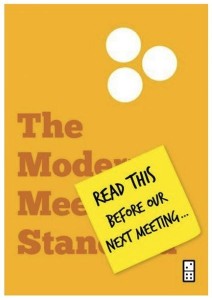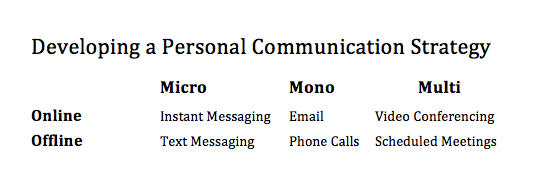Meetings are a powerful tool for organizations. Secretly, though, you enjoy those Dilbert comics that feature the pain and frustration of poorly run meetings. It seems as if Scott Adams, the brilliant author of Dilbert, was a part of your last meeting!
Let’s face it; meetings can be a real drag. We all hate doing them, but we also feel they are a necessary evil to ensure people work well together. For such a straightforward concept – essentially a group of people gathered to discuss an idea – we really do make a mess out of it sometimes.
While statistics vary widely on the amount of time spent in meetings, successful organizations know their teams spend so much time in meetings that turning meeting time into sustained results is a priority. Actions that make meetings successful require direction by the meeting leader before, during, and after the meeting.
Whether you are organizing meetings or simply attending them, you owe it to yourself to become more effective at this skill – especially if you are the team leader!
SOLUTION #2: Build buffers that increase production
THE QUICK SUMMARY
Doing the work and leading the work are very different things. When you make the transition from maker to manager, you give ownership of projects to your team even though you could do them yourself better and faster. You’re juggling expectations from your manager, who wants consistent, predictable output from an inherently unpredictable creative process. And you’re managing the pushback from your team of brilliant, headstrong, and possibly overqualified creatives.
Leading talented, creative people requires a different skill set than the one many management books offer. As a consultant to creative companies, Todd Henry knows firsthand what prevents creative leaders from guiding their teams to success, and in Herding Tigers he provides a bold new blueprint to help you be the leader your team needs. Learn to lead by influence instead of control. Discover how to create a stable culture that empowers your team to take bold creative risks. And learn how to fight to protect the time, energy, and resources they need to do their best work.
Full of stories and practical advice, Herding Tigers will give you the confidence and the skills to foster an environment where clients, management, and employees have a product they can be proud of and a process that works.
A SIMPLE SOLUTION
Do you feel like your meeting schedule is overwhelming, often containing back-to-back meetings? Even with those, do you often feel like you can’t get everything done? Here’s a simple but effective technique: block out time in your schedule without specifying what it’s for, so you have time to work on unexpected issues.
Avoid waiting until the last-minute to schedule a time buffer. The more time you wait, the less available time and/or wiggle room you’ll have to actually drop in that time into your calendar.
Get into the habit of adding a time buffer both to the beginning and end of meetings and appointments as soon as you schedule them. Physically schedule or write-in the buffer into your calendar so you can see it.
As leader, you are uniquely positioned to help the team avoid “meeting pinball,” just bouncing between meetings all day in reactive mode.
One strategy is to establish buffers between tasks or events that allow you ream to reset, consider what’s next, and catch its breath between commitments.
Rather than stacking commitments back to back, you are giving each commitment that you schedule the amount of time it needs and no more, and you’re ensuring that every commitment has a little breathing room blocked off around it so that there is margin for participants.
If you truly want the people on your team to bring their best thinking to a meeting, don’t chain meetings back to back, especially if they are about different projects. Give them five or ten minutes to recollect themselves between meetings, to check in with their other commitments if necessary, and to refocus on the next topic.
Who decided that meetings should be an hour by default? Consider changing the default meeting expectation for your team by making each meeting precisely as long as it needs to be to finish the conversation. Then, take a break for the appropriate amount of time needed to regroup and refocus before the next meeting.
Also consider building buffers at the beginning and end of the day. While there are some situations that require such meetings, limit them as much as you can. By doing so, you’ll allow your team members to settle in, prepare, and bring their full attention and energy to the matters at hand. Also, you’ll allow them to wrap up any important matters at the end of the day before going home so that they can be refreshed and ready to go the following morning.
Todd Henry, Herding Tigers
A NEXT STEP
Time buffers are not just “fluff,” they are extremely valuable units of time! They are what keep meetings from running into one another.
You could think of time buffers just like the spaces between words in a sentence. It’s the difference between reading: “Mary had a little lamb, its fleece was white as snow,” versus “Maryhadalittlelambitsfleecewaswhiteassnow.” The spaces help keep things properly separated.
Think about what value your time buffers could bring you and your team when it comes to meetings. Could your buffer bring you: peace of mind, a little less stress, or time for you to grab a snack and a drink of water?
Evaluate your current slate of recurring meetings and consider eliminating or adapting them to better your team’s time.
How can you better structure your current meeting schedule so that there is less wasted time and energy and more white space for your team to recollect and refocus on the work?
Are there any commitments or expectations that bookend your team’s day that need to be adjusted so that they have more margin around the edges of their schedule?
Once you have created buffer space around your meetings, have conversations with your team to help them take full advantage of it.
Excerpt taken from Remix 90-2.

Tags: Ineffective meetings, Meetings, Successful Meetings, Todd Henry
|
What is MyVisionRoom? > | Back to Execution >
































